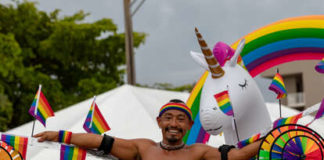By Teddy McDonald
Happy Pride Month! In celebration, we’re reflecting on the history of Pride and Pride’s beginnings at the Port, and honoring important LGBTQIA figures and their achievements and activism. Port employees are also sharing their feelings about Pride and what community means to them.
Test your knowledge about Pride with this pop quiz! (Scroll down for answers at the end of the article)
- Who were some key figures at the Stonewall Riot?
- What initiated the Stonewall Riot?
- When was Pride first held in Seattle?
- How many years has the Port participated in the Pride Parade?
- What is the origin of the Pride flag?
- What can you do to support the LGBTQ+ Community?
“I feel like Stonewall was one of the first times everyone said enough is enough, we’re not gonna take it anymore. We’re human beings born to be free. They stood up that night not knowing they stood up for all of us. They stood up because they were tired. They didn’t know they were rebelling for all generations.” — Charles “Valentino” Harris, Queer Elders Reflecting on Stonewall for them magazine
Pride: origins and impact
History of Stonewall
On June 27, 1969, police entered Stonewall Inn in New York for a routine police raid, leading to a “violent, multi-day rebellion after patrons of the bar resisted the discriminatory conditions, they long endured.” This was not the first time a gay bar was raided in New York. In the 1960s it was illegal to sell alcohol to gay people, which resulted in frequent raids and revoking of liquor licenses of businesses that did not follow the rules. Additionally, people were frequently arrested for cross-dressing or drag, even though this was not actually illegal. Antiquated laws, referred to as “masquerade laws,” were intended to target individuals hiding in disguise for a crime. These laws were dug up and reinterpreted to criminalize folks in the LGBTQ+ community.
While there is not a consensus on who initiated the resistance to the Stonewall raid, the movement was predominately led by “street” youth and transgender women of color resisting arrest. Community leaders like Marsha P. Johnson, Sylvia Rivera, Stormé DeLarverie, and Miss Major Griffin-Gracy are remembered not only for their presence at Stonewall but for their lifetime of work and activism supporting community and working towards gay liberation. Stonewall was not the first major resistance to police brutality faced by the LGBTQ+ community, but it did lead to the first Gay Pride parade the following year. At its very core, Pride is a political event with deep roots in protest and community connections.
History of Seattle Pride
Seattle held its first pride parade in 1974 with an attendance of fewer than 200 people. It would continue growing, along with a flourishing activist scene. Organizations, counseling services, and activist groups began to establish themselves. The availability of social services to the LGBTQ+ community was vital to many people’s choice to settle in Seattle.
1977 marked the first official Gay Pride week declared by Mayor Wes Uhlman. The year that followed was particularly impactful. With a broader acceptance of the LGBTQ+ community came a rise in organized “anti-gay forces” determined to repeal many ordinances that protected LGBTQ+ rights. During the 1978 Pride Week, more than 3000 participants marched in protest. Voters defeated the initiative, preserving the many political gains of that decade. In 1992, Gay Pride week was expanded to include bisexual and transgender identities.
Today, the Seattle Pride Parade sees an estimated attendance of 500,000 community members. According to Seattle Pride, “the Parade provides our entire community an opportunity to celebrate the present, envision the future, and honor our past.”
Pride at the Port
2022 marks 20 years of Port-wide Pride. Port participation in the Pride Parade began with the courageous and authentic leadership of employees, including Lindsay Pulsifer, Rick Williamson, Sloane Hodge, and Beth Britz.
Back in 2004, Lindsay Pulsifer and Rick Williamson met after a “Courageous Conversation” panel discussion on LGBT issues at the Port and realized that there were issues surrounding inclusion, equality, and discrimination in our workplace. In 2016, the LGBTQIA+ community came together to re-form the Port-Wide Pride Employee Resource Group at the Port of Seattle. PWP includes employees that identify as lesbian, gay, bisexual, transgender, questioning, intersex, or asexual (LGBTQIA+), but also those who are allies of the group. Port-Wide Pride members support, encourage, and advocate for initiatives and programs that pertain to a diverse cross-section of Port employees, their spouses/partners, and families. Since 2016, PWP has led the Port’s participation in the Pride Parade Seattle.
“I’ve … imagined a few times what it would be like if I could travel back in time and speak to myself as a teenager. I know what she was feeling deep down inside. I know all the fears that she had, and all the vulnerabilities she was hiding. I would want to grab her by the hand and tell her that everything is going to be okay. I would tell her that there is nothing wrong with you, and that you are more loved and appreciated than you realize. I would tell her that she can be a happier and healthier person if she stays true to herself, like I have finally been able to figure out.” – Chelsea Manning
Important LGBTQIA figures of the past and present
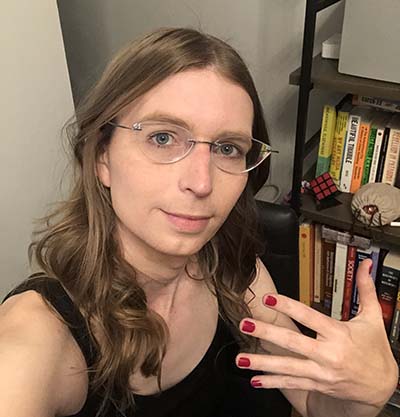
Chelsea Manning
Chelsea Manning is a whistleblower, activist, public speaker, and recipient of the US Peace Prize. She came out as transgender during a trial where Chelsea was sentenced to 35 years in prison for releasing classified documents to Wikileaks. The sentence was later commuted by President Barack Obama. The United States Disciplinary Barracks does not offer sex reassignment or hormone therapy for inmates housed at the facility. Their treatment of Chelsea was considered cruel, inhuman, and degrading.
Audre Lorde
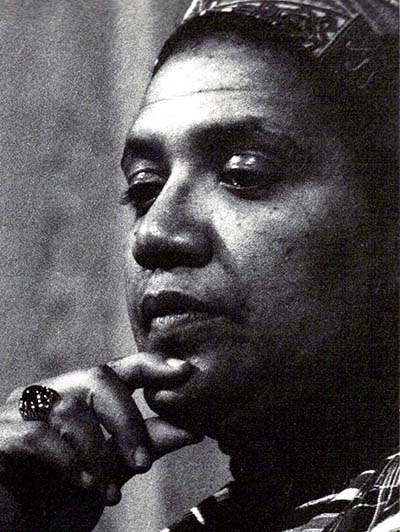
Audre Lorde was an American writer, feminist, womanist, librarian, and civil rights activist. The self-described “black, lesbian, mother, warrior, poet” dedicated both her life and her creative talent to confronting and addressing racism, sexism, classism, and homophobia. Through both poetry and spoken word, Lorde expressed anger and outrage at civil and social injustices, and addressed issues related to civil rights, feminism, lesbianism, illness and disability, and the exploration of black female identity.
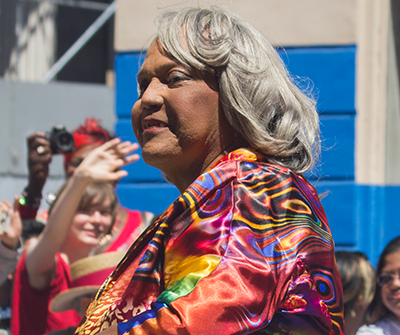
Miss Major
Miss Major Griffin-Gracy, also referred to as Miss Major, is a trans woman activist and community leader for transgender rights, particularly focused on supporting women of color and advocating for a wide range of causes throughout her lifetime, including the Stonewall riots in New York City. She served as the original Executive Director for the Transgender Gender Variant Intersex Justice Project, which provides legal services for transgender and gender variant/non-conforming people in prisons, jails and detention centers.
Jóhanna Sigurðardóttir

Jóhanna Sigurðardóttir is an Icelandic politician and the former Prime Minister of Iceland. She served as a member of parliament from 1978 to 2013, and was an advocate for social justice and strengthening of Iceland’s welfare system. She appointed as Iceland’s Minister of Social Affairs and Social Security, from 1987 to 1994, and later from 2007 until 2009. On February 1, 2009, she became Iceland’s first female Prime Minister and the world’s first openly LGBT head of government. Forbes listed her among the 100 most powerful women in the world.
James Baldwin
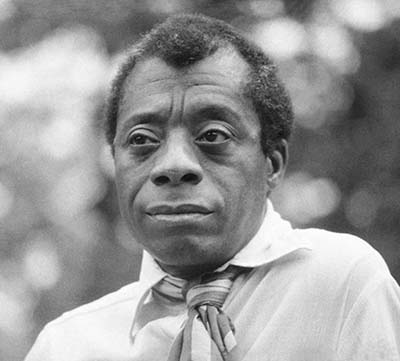
James Arthur Baldwin was an American novelist, playwright, essayist, poet, and activist. His work explores themes of masculinity, sexuality, race, and class and creates narratives against a backdrop of major social change movements in the mid-twentieth century, such as the civil rights and the gay liberation movements. An unfinished manuscript, “Remember This House”, was expanded and adapted for cinema as the Academy Award-nominated documentary film “I Am Not Your Negro”.
Employee Testimonials
We’ve included some employee testimonials on their feelings about Pride and what community means to them.
Lisa, she/her
To Lisa, Pride means equality and embracing acceptance without question or doubt. One issue, Lisa notes, that many people might not know about is how widespread discrimination still is, as well as the continuous attempts to erase people.
As a parent supporting her child, Lisa’s happiness comes from them being able to be who they always have been. Celebrating Pride reflects that happiness for Lisa and her family. In fact, one of Lisa’s role models is her child and her LGBTQIA+ friends who grew up in difficult times. Lisa is now able to see them living their most authentic life.
Rebecca, she/her
Rebecca is excited for Pride this year as it means people being in contact with other people. It is a time for people to celebrate who they are and to show up for your community. Embracing Pride as an ally is a way to show respect for others and recognize each other as human beings. Rebecca is adamant that judgement will not bring people closer together. She says, “Take time to see people are people no matter how they present.” Someone will never know what a great friend they can find if they only recognize that the inside of someone is more important than the outside.
Dave, he/him
When thinking about Pride, Dave sees it as a reminder to the world that you have “to fight to attain and retain your rights…while doing it with style.” With the roots of Pride beginning with the revolutionary Stonewall riot, Dave believes that younger generations should familiarize themselves with that history as a reminder of how fragile retaining our legal rights can be. The politics of Pride are as necessary as its celebratory counterparts. With the Supreme Court decision regarding Roe v. Wade, Dave wants people to know that the decision puts all privacy rights at risk, including those regarding sexual orientation, gender identity, and legal recognition of our relationships.
- Read more about the impacts of Roe v. Wade on various communities
Brandy, she/her
Pride is about celebration and being proud of yourself in its entirety. The best part about that is doing it within others, embracing each other, and having an opportunity to increase bisexual visibility within the LGBTQIA+ community and beyond. Brandy’s favorite loud and proud LGBTQIA+ icons are Sue Bird and Megan Rapinoe, the famous Seattle Power Couple, whose basketball and soccer skills brought them visibility both on and off the field.
Read more about how biphobia impacts health disparities and the ‘double closet’
Kelli, she/they
Despite a broader acceptance of individuals coming out in recent years, it has not always–and is still not always—supported or a safe choice. Many people continue to lose their lives, be disowned by their families, or lose employment and housing. Discrimination is still a major issue the community faces, but for Kelli, Pride not only honors those who came before Kelli, but her younger self as well. Embracing Pride has meant overcoming the internal homophobia society imposes on individuals. Kelli loves walking down Seattle streets in June and seeing the huge Pride flags flying from so many locations. It makes Seattle feel more like home.
One issue Kelli brings up that many people might not know about is the discrimination faced by trans and non-binary people. Kelli mentions that “High suicide rates, physical abuse, job and housing discrimination abound for these folks, and it is unacceptable for things to continue as they are.” It is one of the reasons visibility during Pride is so important, as it is a chance to bring these issues forward to a larger audience.
We still need Pride. It is equal parts a celebration among community as it is a political movement. In 2022 alone, nearly 240 anti-LGBTQ bills have been filed, most of them targeting transgender individuals, and that only covers the legal violence against LGBTQ+ people. For many transgender individuals, particularly women and gender non-conforming people of color, there is danger in existing. The Human Rights Campaign has seen at least 14 transgender people killed by violent means. The “at least” is an important qualifier, as too often these deaths are unreported or misreported, refusing to acknowledge the identities of the people harmed.
It is scary to think about how precariously our humanity sits in legal and social circles. Pride is about people. It is an act of courage, self-love, and a call for justice. As we celebrate Pride, let’s dream of alternatives to the world we know, and begin building the futures we year for.
Pride Month Pop Quiz answers:
- This is a non-exhaustive list: Marsha P. Johnson, Sylvia Rivera, Stormé DeLarverie, and Miss Major Griffin-Gracy
- A routine police raid on the Stonewall Inn
- 1977 is the first official Pride Parade
- Bonus point: 1974 was the first “unofficial” Pride celebration
- 2022 marks 20 years of Pride at the Port
- The Pride flag was designed by artist Gilbert Baker in 1978, commissioned by San Francisco City Supervisor Harvey Milk – one of the first openly gay elected officials in the US. Each color has a unique meaning. Flags for individual identities within the LGBTQ+ community were created in the following decades
- There are a number of ways to support the LGBTQ+ community, here are just a few:
- Interested in donating? Organizations such as GLAAD, The Trevor Project, The Center for Black Equity, Trans Lifeline, The Marsha P. Johnson Institute, and PFLAG help to assist members of the LGBTQ community and educate others
- Volunteering? Seattle has a number of LGBTQ+ organizations
- Want to educate yourself more? The Trevor Project offers a number of guides. Check out Seattle Public Libraries LGBT Staff Picks (fiction, movies, teen literature, child literature, and more!). Trans Lifeline also has a glossary list








